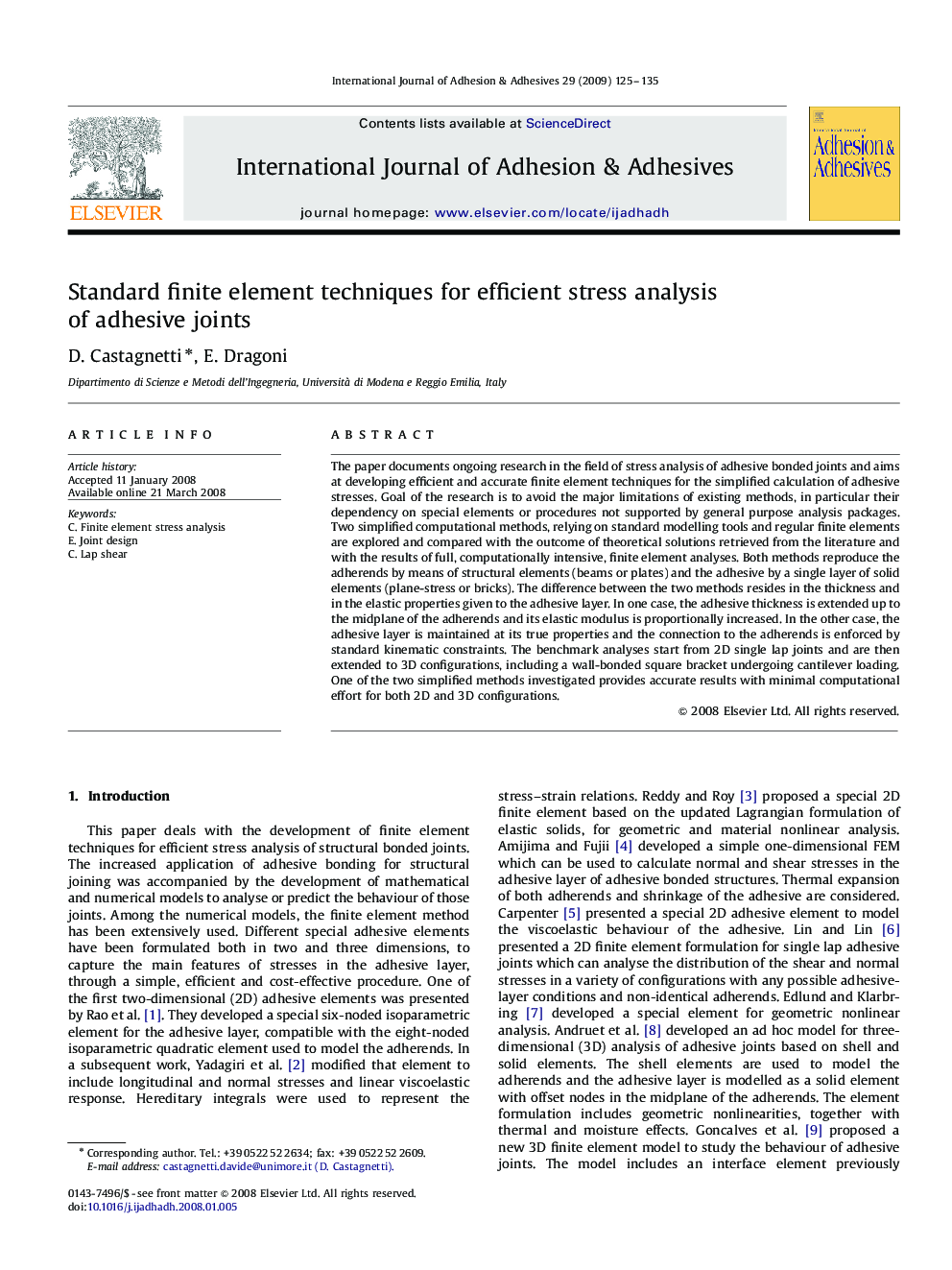| Article ID | Journal | Published Year | Pages | File Type |
|---|---|---|---|---|
| 777451 | International Journal of Adhesion and Adhesives | 2009 | 11 Pages |
The paper documents ongoing research in the field of stress analysis of adhesive bonded joints and aims at developing efficient and accurate finite element techniques for the simplified calculation of adhesive stresses. Goal of the research is to avoid the major limitations of existing methods, in particular their dependency on special elements or procedures not supported by general purpose analysis packages. Two simplified computational methods, relying on standard modelling tools and regular finite elements are explored and compared with the outcome of theoretical solutions retrieved from the literature and with the results of full, computationally intensive, finite element analyses. Both methods reproduce the adherends by means of structural elements (beams or plates) and the adhesive by a single layer of solid elements (plane-stress or bricks). The difference between the two methods resides in the thickness and in the elastic properties given to the adhesive layer. In one case, the adhesive thickness is extended up to the midplane of the adherends and its elastic modulus is proportionally increased. In the other case, the adhesive layer is maintained at its true properties and the connection to the adherends is enforced by standard kinematic constraints. The benchmark analyses start from 2D single lap joints and are then extended to 3D configurations, including a wall-bonded square bracket undergoing cantilever loading. One of the two simplified methods investigated provides accurate results with minimal computational effort for both 2D and 3D configurations.
